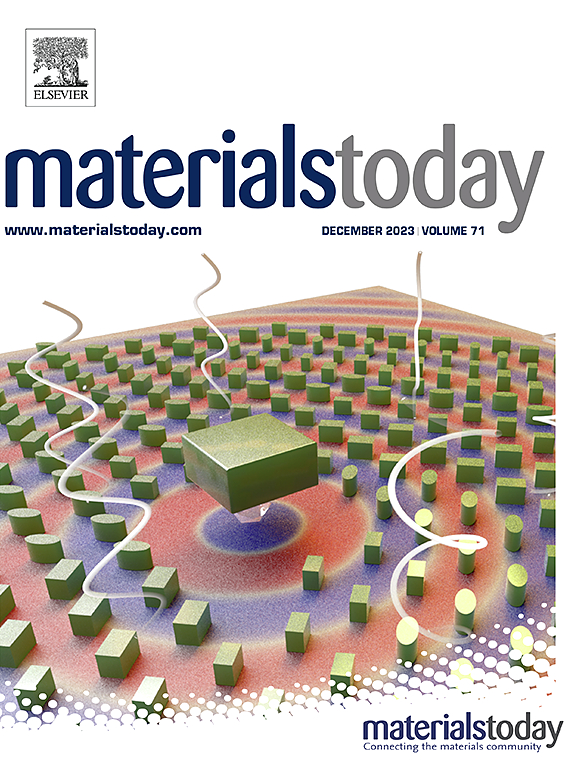植入式和可穿戴摩擦电纳米发电机作为生物医学抗菌应用的新平台
IF 21.1
1区 材料科学
Q1 MATERIALS SCIENCE, MULTIDISCIPLINARY
引用次数: 0
摘要
细菌感染和抗生素耐药性对全球公共卫生构成日益严重的威胁。因此,迫切需要新的抗菌策略和材料来规避细菌耐药性。在新兴的解决方案中,摩擦电纳米发电机(TENGs)由于其高效的自供电能力、灵活的设计和广泛的适用性而成为一种很有前途的物理抗菌技术。尽管基于teng的电刺激(ES)在抗菌应用方面取得了重大进展,但在充分了解其抗菌机制和提高其效率方面仍然存在挑战。本文综述了植入式和可穿戴式生物医用抗菌材料的最新进展。研究了基于TENGs的抗菌机制,总结了目前通过与其他技术的结合提高TENGs抗菌性能的策略,并探讨了其在伤口愈合、深层组织和植入物相关感染、可穿戴电子设备和个人防护装备等方面的应用。最后,综述了生物医学抗菌应用面临的主要挑战,并讨论了潜在的解决方案,为未来的发展和创新提供了有价值的见解。本文章由计算机程序翻译,如有差异,请以英文原文为准。

Implantable and wearable triboelectric nanogenerators as a novel platform for biomedical antibacterial applications
Bacterial infections and antibiotic resistance pose escalating threats to global public health. Consequently, there is a critical need for novel antibacterial strategies and materials that circumvent bacterial resistance. Among emerging solutions, triboelectric nanogenerators (TENGs) have attracted significant attention as a promising physical antibacterial technology due to their efficient self-powered capability, flexible design, and broad applicability. Despite significant progress in applying TENG-based electrical stimulation (ES) in antibacterial applications, challenges persist in fully understanding its antibacterial mechanisms and enhancing its efficiency. This review comprehensively presents the latest advancements in implantable and wearable TENGs for biomedical antibacterial applications. It examines the antibacterial mechanisms of TENG-based ES, summarizes current strategies for enhancing the antibacterial performance of TENGs through integration with other technologies, and explores their applications in wound healing, deep tissue and implant-associated infections, wearable electronic devices, and personal protective equipment. Finally, the review highlights the key challenges in biomedical antibacterial applications and discusses potential solutions, offering valuable insights for future development and innovation.
求助全文
通过发布文献求助,成功后即可免费获取论文全文。
去求助
来源期刊

Materials Today
工程技术-材料科学:综合
CiteScore
36.30
自引率
1.20%
发文量
237
审稿时长
23 days
期刊介绍:
Materials Today is the leading journal in the Materials Today family, focusing on the latest and most impactful work in the materials science community. With a reputation for excellence in news and reviews, the journal has now expanded its coverage to include original research and aims to be at the forefront of the field.
We welcome comprehensive articles, short communications, and review articles from established leaders in the rapidly evolving fields of materials science and related disciplines. We strive to provide authors with rigorous peer review, fast publication, and maximum exposure for their work. While we only accept the most significant manuscripts, our speedy evaluation process ensures that there are no unnecessary publication delays.
 求助内容:
求助内容: 应助结果提醒方式:
应助结果提醒方式:


